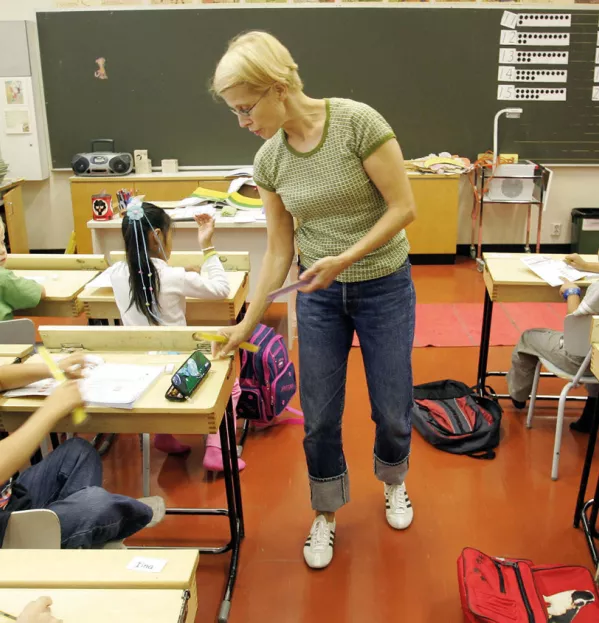Small class sizes squeeze CPD time

The man in charge of the world’s most influential education rankings has warned Scotland that there is a “price to pay” for its smaller class sizes - and that is teachers with “little time for anything else but teaching”.
According to Programme for International Student Assessment (Pisa) boss Andreas Schleicher, the comparatively long periods of time that Scottish teachers spend in front of classes could also explain the current teacher recruitment crisis plaguing schools.
Speaking to Tes Scotland, he said that pay was unlikely to be turning people off teaching - teacher wages in Scotland were similar to those in Finland, where on average nine people apply for every teaching post. Rather, teaching in Scotland was not sufficiently “intellectually attractive”, he argued.
Mr Schleicher, the Organisation for Economic Cooperation and Development’s (OECD) director of education and skills, said: “If you look to Finland, they get nine applicants for every teaching post. It’s the second most prestigious occupation in the country, not because of the salary - salaries are pretty much as they are in Scotland - but they have so many more opportunities for teachers to develop; that’s what professionals are looking for.”
OECD figures show that teachers in Scotland spend more time teaching than almost anywhere else in the Western world - especially in upper secondary.
Scottish teachers in upper secondary spend 855 hours per year teaching, compared with about 745 hours in England, 547 in Finland and an OECD average of 644.
Topic for pay-deal talks
Scottish teaching unions have highlighted the statistics in the latest round of pay negotiations with councils and the Scottish government in a bid to improve teachers’ terms and conditions. The unions are also very firm in their belief that smaller class sizes are beneficial.
However, Mr Schleicher - who spoke to Tes Scotland at the International Summit on the Teaching Profession, held in Edinburgh last week - argued that wherever it was not possible to have both smaller classes and time for teachers to develop, money was better invested in development.
In Shanghai, which tends to top Pisa league tables, student-teacher ratios were roughly the same as in Scotland, but staff were deployed differently, he said. Teachers had class sizes of about 40 pupils but taught for just 11-16 hours per week, leaving more time for one-on-one instruction, talks to parents, preparation and deeper professional development.
Mr Schleicher continued: “If we are talking seriously about the profession, then it means the profession has to own its professional practice in the same way as we take it for granted that medical doctors or lawyers do. That means we have to give people the room to advance their knowledge and their careers, to observe other teachers’ classes, to analyse and to figure out what good practice is.
“And that’s precisely what we can learn from the East Asian education systems. They have similar student-staff ratios to the UK, but they use those staff resources very differently.”
To be able to have smaller class sizes and time for development was “the best of both worlds”, but if one had to be sacrificed for the other, countries had to “be aware of the price of that”, Mr Schleicher said.
‘Not cost effective’
Scotland’s largest teaching union rejected the idea that class sizes were small, adding that comparing China and Scotland was more complicated than considering class size alone. Teaching in China was more didactic and children spent longer in school, noted EIS general secretary Larry Flanagan.
He said: “The fact that we have one of the highest pupil contact hours in the OECD is a poor reflection on our system. We will pursue both agendas, as they are equally important in improving our education system.”
But Lindsay Paterson, professor of education policy at the University of Edinburgh, argued that reducing class sizes was “not cost effective”. He said: “To make a real difference to pupils’ learning, sizes have to be reduced so far that the money would have been more effectively spent on other things. One of these other possibilities would be enabling teachers to teach in different ways, some of which are currently unfashionable.”
You need a Tes subscription to read this article
Subscribe now to read this article and get other subscriber-only content:
- Unlimited access to all Tes magazine content
- Exclusive subscriber-only stories
- Award-winning email newsletters
Already a subscriber? Log in
You need a subscription to read this article
Subscribe now to read this article and get other subscriber-only content, including:
- Unlimited access to all Tes magazine content
- Exclusive subscriber-only stories
- Award-winning email newsletters